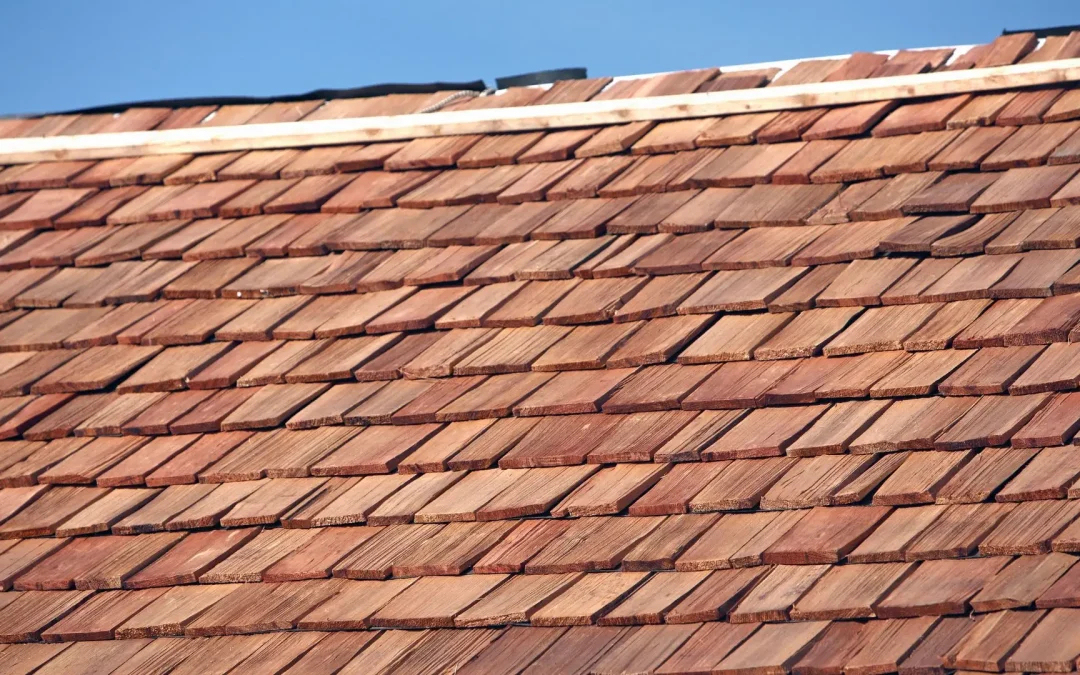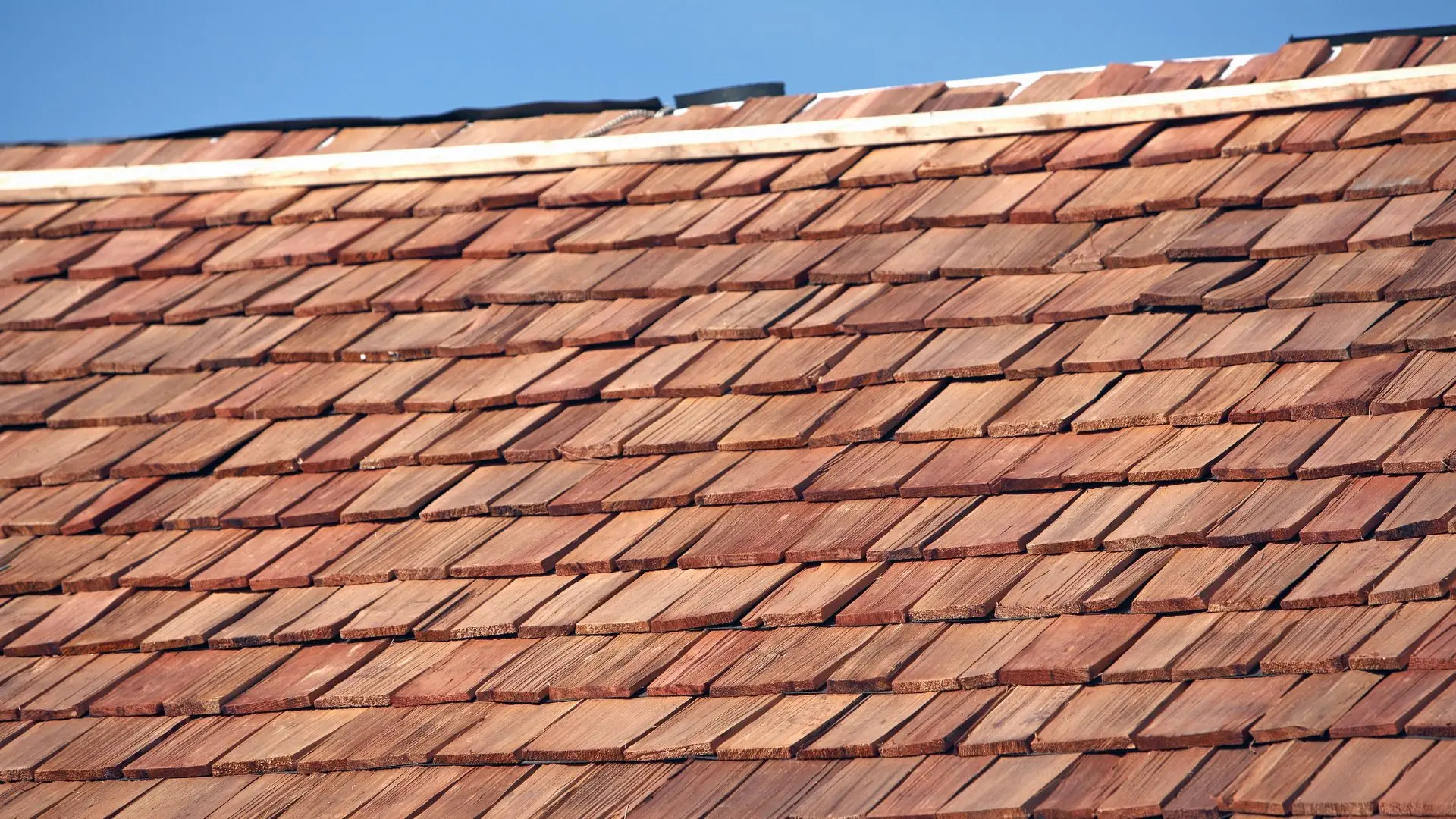Did you know that cedar shake roofs have been around for centuries, with their origins dating back to ancient civilizations? The history behind these roofs is fascinating, but what makes them truly mesmerizing is their enduring appeal in modern times. From their distinctive look to their practical benefits, cedar shake roofs hold a special place in the world of architecture. But why exactly do these roofs continue to stand the test of time? Let’s explore the secrets behind their timeless elegance and the reasons behind their sustained popularity in today’s architectural landscape.
Key Takeaways
- Cedar shake roofs have ancient origins and are resistant to decay and insects.
- Evolution in techniques from hand-splitting to modern methods enhances durability.
- Benefits include insulation, weather resistance, low maintenance, and sustainability.
- Maintenance tips: inspect regularly, clean debris, treat, and trim branches.
- Cedar shake roofs blend traditional craftsmanship with modern design, offering eco-friendly options.
Early Origins of Cedar Shake Roofs
Cedar shake roofs have a rich historical background, tracing their origins back to ancient civilizations that valued the durability and natural beauty of cedar wood. The use of cedar shakes as roofing material dates back centuries, with evidence of their presence found in regions like Tustin, CA. Early civilizations recognized the unique properties of cedar wood, such as its resistance to decay, insects, and the ability to withstand harsh weather conditions. This made it an ideal choice for protecting structures from the elements.
In Tustin, CA, cedar shake roofs were particularly popular due to the abundance of cedar trees in the region. The craftsmanship required to split the cedar logs into thin shakes and then layer them onto rooftops showcased the skill and dedication of early builders. The use of cedar shake roofs not only provided excellent protection but also added a rustic charm to the buildings, blending seamlessly with the natural surroundings. The tradition of cedar shake roofing in Tustin, CA, laid the foundation for its continued popularity and enduring appeal in modern times.
Evolution of Cedar Shake Roofing Techniques
Through meticulous craftsmanship and innovative methods, roofers throughout history have continuously refined the techniques used in installing and maintaining cedar shake roofs. The evolution of cedar shake roofing techniques can be traced through several key advancements:
- Hand-splitting Cedar Shakes: Initially, cedar shakes were hand-split using traditional tools like froes and mallets, a time-consuming process that required great skill and precision.
- Introduction of Mechanical Saws: With the industrial revolution, mechanical saws began to replace manual splitting, increasing efficiency and allowing for more consistent sizing of the cedar shakes.
- Development of Preservative Treatments: As the need for durability grew, roofers started treating cedar shakes with preservatives such as oils or chemical solutions to enhance their resistance to decay and pests.
- Modern Installation Techniques: Today, roofers utilize pneumatic nail guns and advanced waterproofing materials to ensure a seamless and long-lasting cedar shake roof installation, blending tradition with modern efficiency.
These advancements showcase the continuous improvement in cedar shake roofing methods, blending traditional craftsmanship with technological innovation to create durable and visually appealing roofs.
Benefits of Cedar Shake Roofs
Having stood the test of time, cedar shake roofs offer a multitude of benefits that have contributed to their enduring popularity in the roofing industry. Cedar, known for its natural beauty and durability, provides excellent insulation, helping to regulate indoor temperatures and reduce energy costs. Its resistance to harsh weather conditions, such as wind, rain, and UV rays, guarantees a long lifespan for the roof. Additionally, cedar shake roofs require minimal maintenance compared to other roofing materials, saving homeowners time and money in the long run.
Furthermore, cedar shake roofs age gracefully, developing an attractive silvery-gray patina over time that adds character and charm to any home. The natural oils present in cedar wood act as a preservative, enhancing its resistance to decay, insects, and rot. This makes cedar shake roofs a sustainable choice, as they’re biodegradable and can be recycled at the end of their lifespan. To sum up, the benefits of cedar shake roofs make them a timeless and elegant roofing option for homeowners seeking both aesthetic appeal and practicality.
Maintenance Tips for Cedar Shake Roofs
As homeowners who appreciate the enduring benefits of cedar shake roofs, we grasp the importance of proper maintenance to preserve their longevity and aesthetic appeal. Maintaining cedar shake roofs is vital to guarantee they continue to provide protection and charm to our homes.
Here are some essential maintenance tips:
- Regular Inspections: Schedule annual inspections to check for loose or damaged shakes, mold growth, and signs of pests. Early detection can prevent more extensive damage.
- Cleaning: Gently clean the roof surface to remove debris, moss, and algae buildup. This helps prevent moisture retention and extends the life of the shakes.
- Treatment: Apply a quality sealant or preservative to protect the wood from UV rays, moisture, and rot. This treatment should be reapplied periodically as per manufacturer recommendations.
- Trim Overhanging Branches: Keep tree branches trimmed to prevent them from rubbing against the roof and causing damage. Additionally, this reduces the amount of debris that can accumulate on the shakes.
Cedar Shake Roofs in Modern Architecture
The integration of cedar shake roofs in modern architecture showcases a harmonious blend of traditional craftsmanship with contemporary design principles. Cedar shake roofs have found renewed popularity among architects seeking to infuse warmth and texture into modern structures. The natural aesthetic of cedar shakes adds a touch of organic beauty to sleek, minimalist designs, creating a striking visual contrast that elevates the overall appeal of the building.
In modern architecture, cedar shake roofs are often used to evoke a sense of timelessness and connection to nature. The irregularity of the cedar shakes adds depth and character to the roofline, breaking away from the uniformity often seen in traditional roofing materials. Additionally, cedar’s durability and resistance to decay make it a practical choice for sustainable construction practices.
Architects are drawn to cedar shake roofs not only for their visual appeal but also for their eco-friendly qualities. Cedar is a renewable resource that requires minimal processing, making it a more environmentally conscious option compared to other roofing materials. As sustainability continues to be a driving force in modern architecture, cedar shake roofs are likely to remain a popular choice for years to come.
Frequently Asked Questions
Can Cedar Shake Roofs Withstand Extreme Weather Conditions?
Yes, cedar shake roofs can withstand extreme weather conditions. They have natural durability and resistance to elements. With proper maintenance, they provide excellent protection against rain, wind, and snow, making them a reliable choice for challenging climates.
Are Cedar Shake Roofs Eco-Friendly and Sustainable?
Cedar shake roofs are eco-friendly and sustainable, with a statistic showing they can last up to 30 years. The natural material is biodegradable, renewable, and energy-efficient, making it a wise choice for environmentally conscious homeowners.
What Is the Average Lifespan of a Cedar Shake Roof?
On average, a cedar shake roof can last 20 to 40 years. Factors like climate, maintenance, and installation quality affect longevity. These roofs, with proper care, showcase durability and natural beauty, making them a popular choice.
How Do Cedar Shake Roofs Compare to Other Roofing Materials in Terms of Cost?
When comparing cedar shake roofs to other materials in cost, we find that while initial investment may be higher, long-term savings on maintenance and energy efficiency make them a competitive choice for those seeking quality and durability.
Can Cedar Shake Roofs Be Painted or Stained to Change Their Color?
Yes, cedar shake roofs can be painted or stained to change their color. This process allows for customization and rejuvenation of the roof’s appearance. However, proper preparation and maintenance are crucial to guarantee lasting results and durability.
Conclusion
To sum up, the timeless elegance of cedar shake roofs transcends generations, standing as a proof to the durability and beauty of natural materials.
With a history rooted in ancient civilizations and a modern resurgence in contemporary architecture, these roofs are more than just a roofing option – they’re a symbol of connection to nature and sustainable living.
Their ability to age gracefully and provide excellent insulation make them a truly unparalleled choice for those seeking authenticity and sophistication in their homes.



Recent Comments